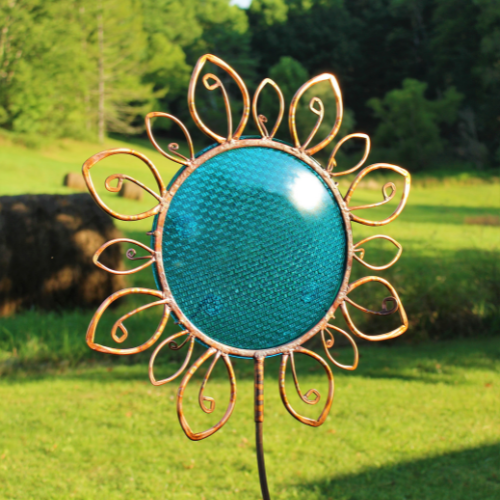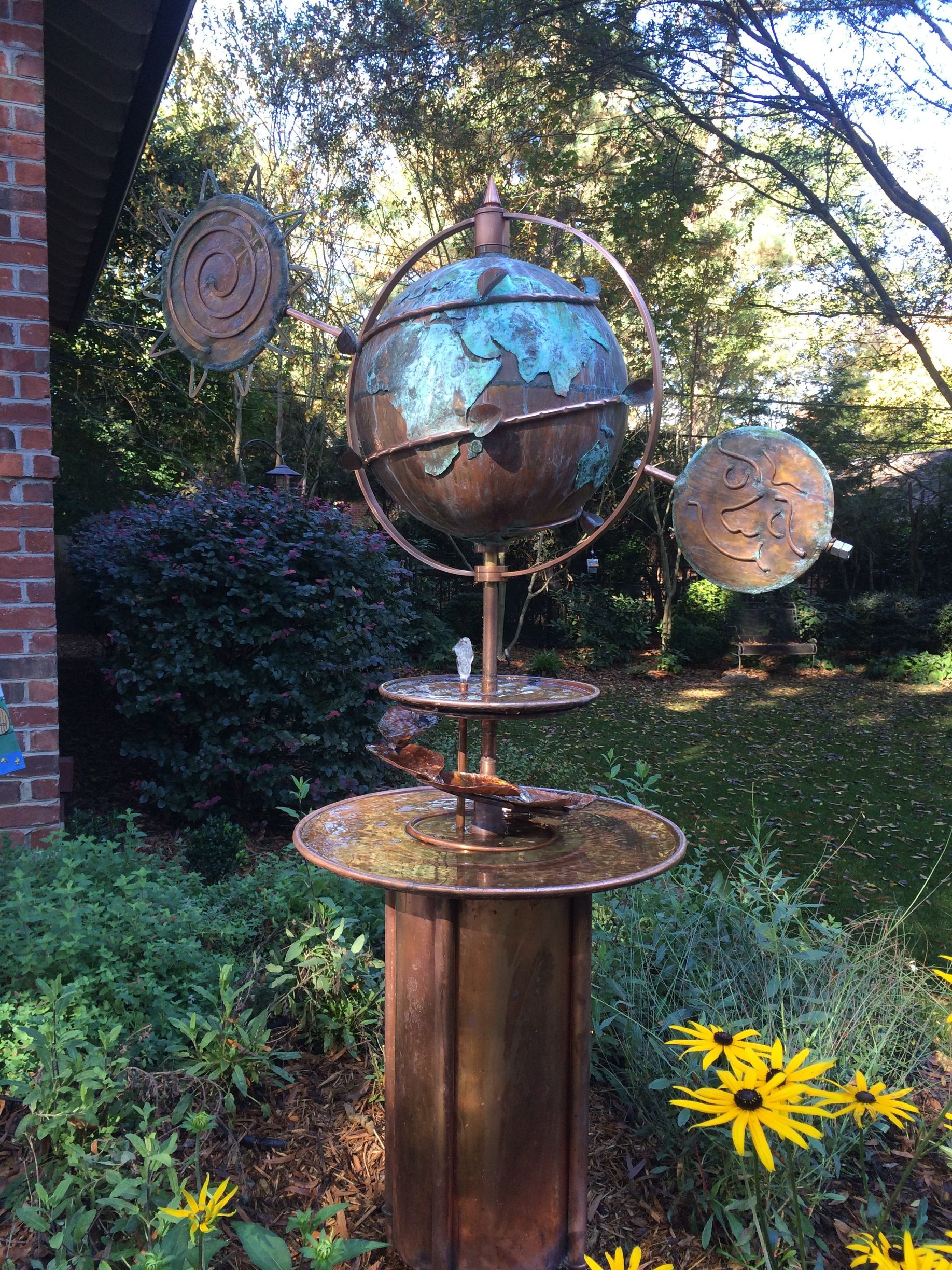Metal Artist | Embracing the Form: The Journey of a Metal Artist
Art, in its many forms, is a reflection of the artist's heart, passion, and worldview. A metal artist’s work is their voice, their unique signature on the world. Each piece tells a story, each sculpture is a testament to the artist's journey, and every display is a visual chronicle of their passion.
This passion is manifested in their studio, a sanctum where raw materials are transformed into forms of expressive beauty. Here, metals like bronze, steel, and iron rise to life, where once they were simply parts of the earthly crust. Hand welding these elements, the metal artist bends the laws of nature to create pieces that transcend the mundane.
The beauty of being a metal artist lies in the balance between chaos and order. Each piece of metal art requires an intricate dance between the artist's will and the material's inherent form. The artist must learn to listen to the material, to respect its natural lines and work with them to bring their image to life.
These artists are sculptors, craftsmen, and dreamers. They see the world not as it is but as it could be. Where others see scrap, a metal artist sees potential. Where others see raw materials, they see the elements of their next masterpiece. And where others see an empty space, they see the gallery where their art will soon stand, resonating with collectors and people who appreciate the depth and detail of their work.
What sets metal artists apart is the range of methods they use, and the variety of shapes they can create from seemingly intractable metals. Utilizing tools like welding torches and grinders, their skilled hands craft works that speak to the human experience, drawing inspiration from nature, the city, or the colors and textures of life itself.
The creations of a metal artist are not simply for display; they are an immersive experience. The observer is invited to explore the intricate textures, the play of light on the surface, the interplay of colors, and the way the art alters the space it inhabits. The pieces are not just artworks; they are a celebration of life, a testament to the human spirit's resilience, and a manifestation of the artist's love for their craft.
Metal artists create a variety of pieces from delicate wall art to colossal sculptures. Their work transcends the boundary of traditional art forms and creates a bridge between the industrial and the aesthetic. They create a new realm where the raw power of steel is juxtaposed with the delicate balance of design.
The American metal art scene is thriving, with places like California (and I like to think West Virginia) leading the way. Galleries across the country from California to West Virginia host a wide range of metal art, from pieces by established artists to works by emerging talents, showcasing the incredible diversity of this art form.
Artists in this medium work with a variety of metals, from copper with its warm, lustrous color, to stainless steel and its cool, industrial feel. The choice of metal can alter the feel of a piece entirely, and skilled artists play with this, creating a series of works in different metals that, while being of a single design, each hold a unique personality.
In their journey, metal artists continue to push boundaries and redefine the limits of their art. They seek to give new meaning to the everyday materials we take for granted, and in doing so, they enrich our lives. The works of these artists are not just a testament to their skill but also a beacon of inspiration to others in the industry.
Being a metal artist is not just about creating beautiful things. It's about reshaping the way people perceive the world. It's about turning lifeless parts into timeless pieces, illuminating spaces with the beauty of forms, and transforming the ordinary into the extraordinary.
The life of a metal artist is a symphony of passion, dedication, and creativity. It's a dance with metals, a silent dialogue with forms, and an endless quest for beauty. It's about sharing one's soul through sculptures, inspiring others with their vision, and leaving a mark on the world.

History of Metal Art
Metal art, in its many forms, has a rich and enduring history that dates back to the dawn of civilization. The first examples of metalwork can be traced to the Bronze Age, where the technique of smelting enabled early artists to create simple tools and decorative items. Over time, the complexity of these works increased, reflecting the development and refinement of metalworking techniques.
Throughout history, different civilizations have left their indelible mark on metal art. In ancient Egypt, intricate gold work adorned the tombs of Pharaohs. Greek and Roman blacksmiths crafted tools, weapons, and sculptures in bronze and iron, demonstrating their mastery over the medium. During the Industrial Revolution, the mass production of metal parts and the rise of steel allowed for a new scale of art, leading to the creation of large sculptures and architectural features.
In America, the art of metalwork was often a blend of the utilitarian and the artistic. Native American tribes used metals for creating jewelry, tools, and ceremonial items, while the advent of the railroads and the steel industry in the late 19th and early 20th century gave birth to a new generation of metal artists. Today, metal art is a vibrant field that continues to evolve, embracing new technologies and techniques while still honoring the traditional methods and forms.
Types of Metal Art
Metal art is a broad field that encompasses a wide variety of styles, techniques, and forms. Some artists prefer the grand scale of metal sculptures, creating towering pieces that command attention in public spaces. These large-scale works often incorporate a variety of metals, including steel, copper, bronze, and aluminum, and can range from abstract forms to realistic depictions.
On the other hand, some artists specialize in smaller, more intimate pieces such as wall art, jewelry, or functional items like furniture. These works often emphasize detail and craftsmanship, with artists spending countless hours perfecting each piece. Metals such as silver, gold, and copper are commonly used for these intricate designs due to their malleability and aesthetic appeal.
Another form of metal art is kinetic sculptures, where the artwork is designed to move with the wind or a motor. These pieces create a dynamic experience, blending the solidity of metal with the fluidity of motion.
Tools & Materials Used in Metal Art
The creation of metal art requires a specialized set of tools and materials. Depending on the artist's preferred style and the intended outcome, different types of metals are used. Common materials include steel, copper, bronze, aluminum, and stainless steel, each with its own unique properties. The choice of metal can significantly influence the final product's look and feel.
In addition to the raw metal, a metal artist's toolkit often includes various welding tools. MIG (Metal Inert Gas) and TIG (Tungsten Inert Gas) welders are commonly used for joining pieces of metal. Plasma cutters, used for cutting shapes out of metal sheets, are another essential tool.
For shaping and bending metal, artists often use hammers, anvils, and hydraulic presses. Grinders and sanders are used to smooth rough edges and add texture to the metal's surface. Heat is also a crucial element in metalwork. Torches, kilns, and forges are used to heat the metal, making it more malleable and easier to work with.
Safety equipment is also an integral part of a metal artist's studio. This can include safety glasses, gloves, and welding helmets to protect against sparks, intense light, and heat.
Influence of West Virginia on the Artist's Work
The rolling hills, vast forests, and meandering rivers of West Virginia often serve as the perfect muse for a metal artist. The state's picturesque landscapes and close-knit communities have played a significant role in shaping many artists' aesthetic preferences.
Here, metal artists are deeply connected to the environment, their inspiration drawn from the state's rich natural beauty. The mountains' grandeur, the vibrant colors of changing seasons, the textures of the local flora - all of these elements find their way into the artwork, manifesting as intricate lines, layered designs, and evocative shapes.
Many artists in West Virginia also draw from the state's rich industrial heritage. The state's history in the steel, coal, and iron industries offers a unique connection to the raw materials used in their craft. From the abandoned factories to the rusted tools, the echoes of these industries live on in their artworks, adding another layer of depth and complexity to each piece.
Process and Techniques of a Metal Artist
The process of creating metal art is a journey of transformation. It begins with an idea, a spark of inspiration that ignites the artist's vision. This vision is then given form and life through a range of techniques and tools.
Welding is a core aspect of a metal artist's repertoire, a method that enables them to fuse separate parts into a cohesive whole. This technique allows the artist to manipulate the metal, to bend and shape it according to their will. Welding provides a sense of control, allowing the artist to bring their intricate designs to life.
Texture plays a significant role in a metal artist's work. Artists use various methods to manipulate the metal's surface, such as grinding, sanding, or applying heat. These techniques allow artists to create a range of effects, from smooth, mirror-like finishes to rough, rustic looks.
In the Community of Metal Artists
A metal artist's journey isn't solitary. They are part of a vibrant community of artists, working in various mediums, all bound by their love for the art. This network of artists serves as a wellspring of inspiration, each artist influencing and being influenced by others.
This vibrant community often exhibits their works in local galleries, providing a platform for artists to share their art and engage with art enthusiasts and collectors. These exhibitions are a celebration of the diversity and richness of metal art, a testament to the talent and creativity thriving in West Virginia's art scene.
West Virginia's metal artists also often collaborate with other local craftsmen, designers, and artists to create unique, multi-medium artworks. These collaborations give rise to new forms and designs, pushing the boundaries of metal art and opening up new avenues of creative expression.
A Passion that Inspires
The journey of a metal artist is one of unending exploration and constant growth. It is a journey marked by passion, dedication, and an unwavering love for the art form. Their works are a testament to their resilience, their ability to see beauty in the mundane, and their unwavering commitment to their craft.
Every metal artist has a unique style, a unique voice that sets their work apart. Yet, they all share a common thread - a deep-seated passion for their craft and a relentless pursuit of perfection. Through their work, they not only enrich the art scene but also inspire others to pursue their own artistic endeavors.
Things To Do In Athens WV
Athens WV News

